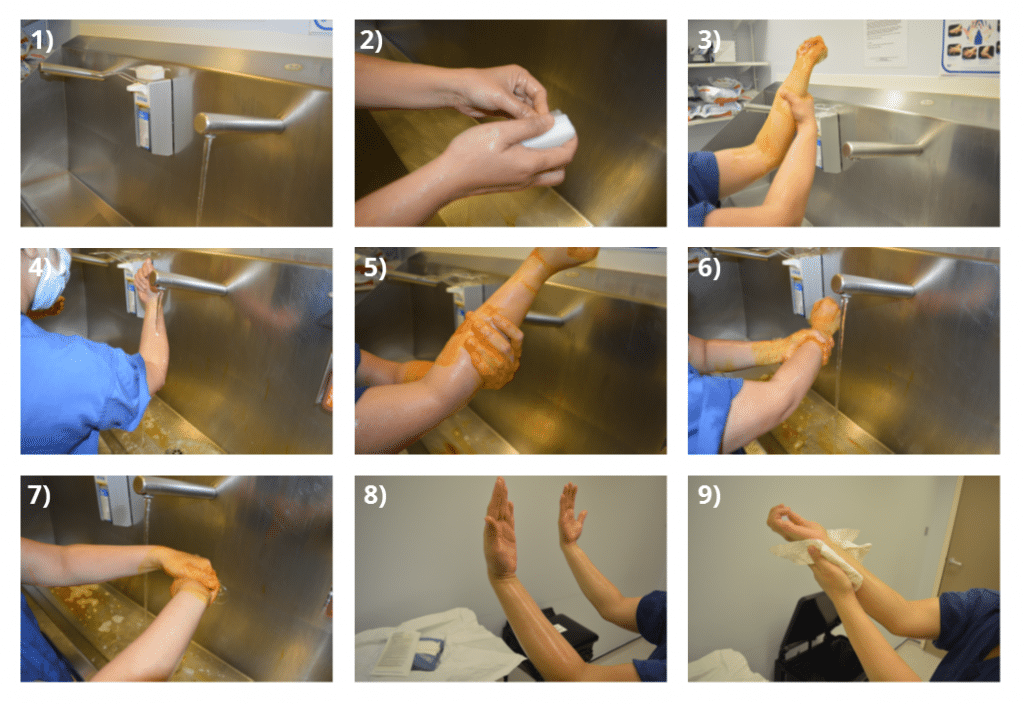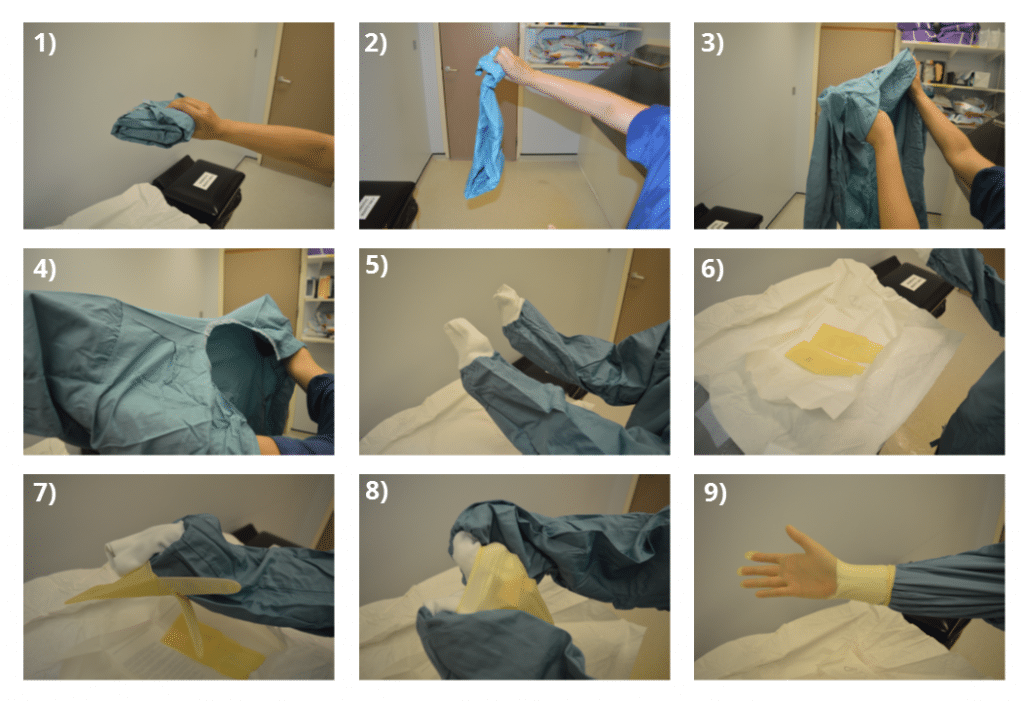The process of scrubbing, gowning, and gloving is one that all members of the surgical team must complete before each operation.
In the surgical scrub, the hands and forearms are decontaminated. A sterile surgical gown and pair of gloves are subsequently donned, creating an aseptic environment.
‘Scrubbing in’ dramatically reduces the risk of infection and significantly improves patient outcomes. As such, it is a skill that should be taken seriously and always performed to the highest standard.
In this article, we shall look at the procedure for surgical scrubbing, gowning, and gloving.
Procedure
Preparation
- Remove any watches and rings from your hands
- Ensure that your sleeves are at least two to thee inches above your elbows
- Open out your gown pack onto a clean table, only grabbing the outermost edges to maximise the sterile field (Figure 1.1, 1.2)
- Open your glove packet and let it drop onto the clean area (Figure 1.3,1.4)
- Collect a nail pick and brush
- Put on a face mask, securing appropriately
Scrubbing
- Allow the water to run (Figure 2.1) and cover the nail pick and brush with soap, using your elbows on the soap dispenser; clean your nails and remove any gross debris from your hands (Figure 2.2)
- Start by scrubbing your hands and forearms, down to your elbows, using the WHO hand washing procedure for the hands and a rotational action for your forearms (Figure 2.3); this should last for at least one minute
- Wash the soap from your hands and forearms by holding up your arms with your hands elevated under the tap, such that the water runs off into the sink from your elbows (Figure 2.4)
- Repeat this procedure a further three times, initially down to the mid-forearm (Figure 2.5), then down to the wrists (Figure 2.6), then just for the hands (Figure 2.7), each time lasting for at least one minute
- Keeping your arms elevated (Figure 2.8), dry your hands and forearms with the sterile towels in the gowning pack, using a dabbing motion instead of a wiping motion (Figure 2.9); use one towel for each hand, before throwing them away

Figure 2 – Scrubbing in, the aim is to decontaminate the hands and forearms
Gowning and Gloving
- Take the sterile gown (Figure 3.1) and gently shake it out, taking care not to let anything else touch it (Figure 3.2)
- Open it up and place your hands into the sleeves (Figure 3.3,3.4); keep your hands inside the sleeves (Figure 3.5)
- Ask an assistant to help pull it up over your shoulders and fasten it up at the back
- Take the right hand glove and place it, palm down, fingers facing your body (Figure 3.6)
- Grasp the bottom of the cuff with the thumb and index finger of your right hand, still inside the sleeve (Figure 3.7); grasp the top of the cuff with your left hand (also inside the sleeve) and pull the glove around and over your right hand (Figure 3.8)
- Pull gently on the sleeve of the gown to help move your hands into the gloves and straighten out the fingers (Figure 3.9); the sleeves of the gown should remain over most of your palm
- Repeat this technique for the left hand
To Complete
- It is advised to rest your hands on your front as you move around to ensure you remain sterile
- Make sure you do not touch any non-sterile equipment as you move to the operating area
Key Points
- All members of the surgical team must scrub, gown, and glove appropriately before each operation.
- The hands and forearms are decontaminated, before a sterile surgical gown and pair of gloves are donned
- ‘Scrubbing in’ dramatically reduces the risk of infection and significantly improves patient outcomes


